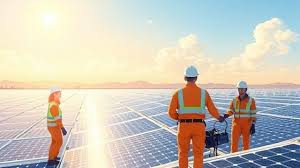Column
Vision 20:2020 Mirage Or Reality?
Nigerians are not comfortable that we are talking about competing with leading economies in the Western and Eastern blocs, when the necessary institutional framework is virtually non-existent, when our socio-political system is still characterised with mediocrity and sycophancy, when corruption still stir us in the face, (in high and low places) and indeed when the ideals of the Rule of Law and democratic process are still fragile.
Barely eight years to go, Nigeria’s ambition to categorise the country among the world’s 20 strongest economies by 2020 and place her as one of the fastest developing nations is fast becoming a pipe dream. Vision 20: 2020 is packaged to launch Nigeria, not only as an African giant, but a global economic giant in the comity of nations.
However, the project appears to be heading to the rocks as a number of factors stir the project on the face, thus hindering the successful execution of the scheme. Among the obstacles include: dearth of non accessibility to long-term credit facilities, high cost of living, influx of substandard finished products, especially from Asia axis (China, Taiwan, Korea, Malaysia, India etc).
Other indices are unstable power/energy, poor infrastructures like road network, absence of railway transport, poor research, weak link between small and large-scale enterprises, poor tax administration, policy somersaults, among other hindernesses.
Infact, the obstacles are legion and except deliberate and conscious efforts are made to revert the trend, our hopes to be among the best 20 in the world will continue to be a mirage.
Just recently, a friend of mine, simply called Joe (an economist) while addressing participants during an economic forum held in Port Harcourt recently observed that Nigerian leaders were merely day-dreaming with the Vision 20:2020 project, noting that Nigeria cannot break even with the present crop of leaders. For him, our leaders are just re-circled from one dispensation to another, and except there is a redical departure from the status-quo, we will continue to slide further.
For Joe, our leaders lack the political will and commitment for a change as most of them are products of the “old brigade” who have run out of ideas and only bent on milking Nigeria dry, rather than strategising on how to move the country forward economically. According to him, this generation of Nigerians may not see the Messiah that will salvage our economy.
Rightly or wrongly, my friend made his views clear to the conveners of the forum. He may not be completely right in his assertion but there are salient points that must and should be addressed, if Nigeria must attain the philosophy behind the Vision 20:2020 project.
Currently, the Nigeria business community, from all indications, appears not fully mobilised for the execution of the project. The development of the business sector is critical, and indeed, crucial to the realisation of the economic dream.
Sadly enough, the manufacturing sub-sector which, of course, is an intergral part of the business community is virtually in limbo, operating in less than 50 per cent capacity due to multiple factors militating against its full operational capacity.
The sector, due to obvious hip-cups, contributes only three per cent yearly as against 25 per cent which the sector should ordinarily contribute to the Gross Domestic Product (GDP).
The sector’s minimal contribution to the GDP is largely attributable to the nation’s epileptic power situation Manufacturers lament that they spend over N3.5 trillion annually on diesel and petrol due to unstable electricity which had remained a nightmare and unaddressed to by successive administrations for decades.
Except drastic and decisive steps are taken urgently by the authorities, the phenomenon may remain the same and this, no doubt, had forced many manufacturing firms to re-locate to neighbouring countries where power is relatively stable.
The question now is what should government do to address this? Some say, the authorities should declare a state emergency in the power sector while other opine that Nigeria must withdraw supplying some West African countries with light to add to the nation’s power capacity, if it is serious about the Vision 20:2020 ambition.
As much as I subscribe to these views, I also believe that the problem with the power sector is much more than that because there seems to be unpatriotic Nigerians with foreign collaborators who are bent on sabotaging government’s efforts in addressing the endemic power situation in Nigeria. Government should therefore not hesitate to identify such blacklegs with a view to apprehending and possibly prosecuting them as a deterant to others with such evil intentions.
Similarly, our leaders need to focus on job creation, agriculture, mass transportation, land reforms, qualitative education, functional healthcare system, infrastructural development and security to turn around the economy and make the 20:2020 economic scheme realisable within the target date.
A school of thought believes that the deadline is achievable if only the government can muster enough political will and genuine commitment to make things happen.
When the Yar’Adua’s administration assembled a cream of Nigerian egg-heads in Abuja in October, 2008 to fashion out the road-map to the nation’s desire to join the league of 20 of world’s strongest economies, little did he realise that apart from the political will power needed to push ambition to a desired end, other variables need to be addressed squarely.
Perhaps, it may be right to assert that the zeal and spirit which the then administration attached to the project may have died down judging from the fact that four years after, not much had been achieved towards realising the dream of belonging to “Club 20 in the next eight years.
One is not, however, saying that Nigeria does not have the potentials to make the dream realisable but the fact is that we need more than rhetories and more of action, action, action.
The action must manifest in setting out clear-cut targets by creating institutional and micro-macro economic framework from growth –inducing environment.
Cases abound of policy thrusts by previous administrations which did not see the light of the day just because successive regimes did not see such projects or programmes as their babies and therefore attached no priority to them.
Targets were set on education, agriculture, health, power generation and distribution, industrial capacity, among others, yet noting came out of them eventually.
Remember Operation Feed the Nation (OFN), Green Revolution, Vision 2010, eradication of polio, illiteracy and poverty, guinea worn, Structural Adjustment Programme (SAP) among other policies which hit the rocks after their initiators left the saddle.
One cannot easily forget our economic policy thrust aimed at reducing inflation to single digit, revaluation of the Naira, and other economic jargons which could not lead Nigeria anywhere close to Club 50 strongest economies in the world.
My worry on the Vision 20:2020 is hinged on these economic considerations which appear not to be favourable to the successful execution of the target date.
Nigerians are not comfortable that we are talking about competing with leading economies in the Western and Eastern blocs, when the necessary institutional framework is virtually non-existent, when our socio-political system is still characterised with mediocrity and sycophancy, when corruption still stir us in the face, (in high and low places) and indeed when the ideals of the Rule of Law and democratic process are still fragile.
Column
Renewable Energy Faces Looming Workforce Crisis

Column
Why Oil Prices Could See Significant Upside Shift

Column
Nuclear Stocks Soar on Stargate AI Infrastructure Announcement
-

 Business3 days ago
Business3 days agoPETAN, Others Unveil ALCO, Get NCDMB’s Support … Mull Synergy With APPO, AU
-

 News3 days ago
News3 days agoNigeria’s Debt To W’Bank IDA Hits $19.2bn -Report
-

 Sports3 days ago
Sports3 days agoNYG:154 Nasarawa Contingent Storms Kwara For Zonal Eliminations
-

 Sports3 days ago
Sports3 days agoNigeria delegation Visits London over 2030 Commonwealth bid
-

 Business3 days ago
Business3 days agoAON Lifts Ban On Freed Ibom Air Passenger
-

 Sports3 days ago
Sports3 days agoD’Tigers flawless finish against Lions in AfroBasket
-

 News3 days ago
News3 days agoChurch Renders Free Medical Outreach, Others To Host Communities
-

 Maritime3 days ago
Maritime3 days agoNCC Announces Telecoms Facilities Protection Measures

